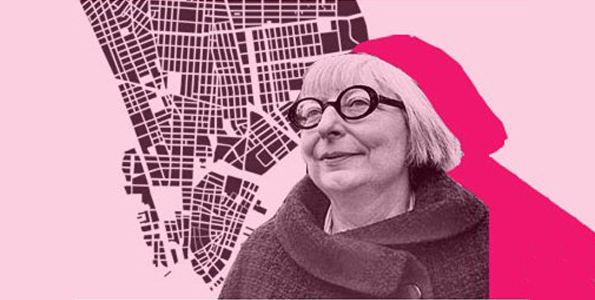She was not an urban planner, but she influenced urban planning: Who is Jane Jacobs?
She had no college degree or formal training in urban planning; That's why she was criticized a lot. According to Jane, the economic functioning of the world could be deciphered by observing the sidewalks of a city.

For him, the city was a place where diversity was valued, a place of contact between differences, and a place built for people, not cars.
Born in Pennsylvania on May 4, 1916, Jane Jacobs was an American journalist, author, and activist known for her influence on urban studies.
In her influential book The Death and Life of Greatest American Cities (1961), she argued that urban renewal did not respect the needs of most city dwellers. In the book, she also introduced sociological concepts such as 'eyes on the street' and 'social capital'.
Jane Jacobs (4 May 1916 – 25 April 2006) was an American-Canadian journalist, author, theorist, and activist who influenced urban studies, sociology, and economics. Her book The Death and Life of Great American Cities (1961) argued that "urban renewal" and "slum clearance" did not respect the needs of city-dwellers.
A mother and writer who was critical of experts in the male-dominated field of urban planning, Jacobs feared authority figures on the subject. She had no college degree or formal training in urban planning; That's why she was criticized a lot.
According to Jane, the economic functioning of the world could be deciphered by observing the sidewalks of a city. For him, the city was a place where diversity was valued, a place of contact between differences, and a place built for people, not cars. Commercial centers did not mean highways, underpasses, and hilly residential blocks. Her views also faced sexist criticism as "views she gained by looking through the window of a housewife". The lack of a college degree was also a constant reminder. In fact, there were almost no women among urban planners.
Her close relationship with the city started during the years when she was looking for a job from street to street, and then she started a strong struggle with the most powerful lobbies and profit centers of the period against a highway project passing through the middle of the district where she lived, and she even went to prison. In the 1950s and 60s, a highway project was planned through the middle of Greenwich Village, the neighborhood where she lived. Serious resistance was organized and the project was stopped. Later, the project was brought to the agenda again in 1962, 1965, and 1968. During the demonstrations in 1968, Jane was accused of going against the law and disrupting public order. She spent time in prison and had to go to the courts for a long time. Jane also described the construction of the World Trade Center as a disaster for the Manhattan coastline. After her arrest in 1968, she settled in Toronto with her family. Not only was she tired of fighting against New York City, but she also didn't want her two military-age sons to go to Vietnam, a war they didn't believe in. She also led local people's initiatives on urban planning in Canada. She opposed the constructions made under the name of urbanization, especially the giant highways and constructions. She was arrested twice.
Jacobs died of a stroke at Toronto Western Hospital on April 25, 2006, at the age of 89.
Who is Jane Jacobs?
Jacobs, who graduated from Scranton High School at the age of 17, later worked as an unpaid assistant to the women's page editor of the Scranton Tribune newspaper for a year. She moved to New York with her sister Betty in 1935. Her first job was as a secretary, then as an editor at a trade magazine. She wrote articles for the Sunday Herald Tribune, Cue magazine, and Vogue. She took courses in geology, zoology, law, political science, and economics at Columbia University School of General Studies for two years.
Jacobs, who attended Columbia University School of General Studies for two years, found a job at Iron Age magazine.
In 1952, she became the editor of Architectural Forum magazine, owned by the Time group, in New York. She was successful. In 1954, she was sent by the magazine to write about a renovation project in the city of Philadelphia. An article praising the success of the project was expected. However, Jane did not like the project and criticized it, pointing out the African Americans who were negatively affected by the project. Her article did not make her bosses very happy, but it was published anyway. In 1955, she gave a speech at Harvard University about the East Harlem improvement project. Her speech was received positively.
